This week’s Secret Coast design connects the landscape of wartime Argyll to that of the Arctic Circle

Because of its topographical similarities to the fjords of northern Norway, Loch Striven was chosen as the training location for the innovative x-craft submarines, whose story we have been exploring this week.

My accompanying design also brought Scotland and the Arctic Circle together in a pair of mittens of the fulled, embellished type that have been routine winter-wear in Nordic countries for many years.

Named for the Swedish village where, in the late nineteenth century, a young knitter named Erika Aittamaa developed her first cosy pair, Lovikka mittens are generally knitted from warm, undyed wool, with a decorative embroidered cuff. A quick search on Ravelry brings up 52 Lovikka mitten patterns, each offering a different interpretation of the traditional design. Some contemporary Lovikka mittens use stranded colourwork or slipped stitches to decorate the cuff, others, like Kristin Drysdale’s from her recent book, feature lovely floral embroidered motifs.

For the Henty-Creer mittens I wanted to retain the traditional ‘X’s – as a nod to Loch Striven’s innovative x-craft submarines – using the old crewel embroidery technique of couched threads.
So here’s how to couch some X’s!
I recommend starting by knitting yourself a small swatch to practice on. The swatch below is felted – to match the fabric of the mittens.

1 Cut 2 long (60cm / 24in) strands of 2 contrasting shades of yarn. With dressmakers pins, beginning at thumb edge of cuff top, mark out points vertically around the cuff circumference at regular intervals of approximately 2cm / 3⁄4in.
2. Bring together 1 strand of each of the 2 contrasting shades, and lay these horizontally across the upper edge of the mitten cuff (just beneath garter stitch rounds) and secure by making tiny vertical stitches (couching) in the mittens’ main colour at intervals corresponding to pins, leaving long ends of the contrasting shades at the start and finish of the round.

3. Lay second strands of contrast shades, parallel across lower edge of cuff, just above garter stitch rounds, and secure similarly, using the marker pins to ensure couching points match those above.
4. Remove marker pins.

4. Draw strands from upper cuff edge and lower cuff edge together, and couch again with A at points in centre of cuff where strands meet, forming an X.
5. Continue couching Xs all around the cuff, using long ends to adjust tension.
6. When all Xs are complete, and strand tension is adjusted satisfactorily around the cuff, draw ends to back of work, trim, and secure to the wrong side of the work.

As well as the couched X’s, my mittens also feature barnacle motifs: emblems of endurance, resilience and the underwater landscape that fascinated Henty-Creer.

These motifs are embroidered directly onto the back of each mitten’s hand, using a very simple technique.

Embroidered barnacles
1. Picture each barnacle as an irregular ovoid shape, with an offset centre.
2. Thread sharp / crewel needle with a contrasting shade of yarn, coming up from wrong side to right side of work at offset centre point of ovoid.
3. Make a long, straight stitch to the ovoid’s outer edge, taking the needle through the fabric to the wrong side.
4. Bring the needle back to the right side at a point just adjacent to the last stitch, and take it back in to the centre, drawing needle through to wrong side.
5. Bring the needle back up to right side at the centre at a point just adjacent to the last stitch, take it back to the outer edge (creating a long stitch) and draw through to wrong side, at a point just adjacent to the last stitch.

6. Continue these steps, creating long stitches from the outer edge to the centre, and the centre to the outer edges, as established until the barnacle shape is complete.
7. Complete the barnacle by defining (and containing) its bulked-up centre point with two or three small, straight stitches.
8 Make further motifs with other shades of yarn creating an irregular barnacle colony pattern over the back of hands of both mittens.

I think of a plain pair of mittens very much as a blank canvas: there are many different ways in which you might choose to embellish them, and countless embroidery techniques to choose from. And if you are new to embroidering on knitting, a pair of mittens is a great, small project with which to start experimenting!

I’ll pop up a link to this post permanently on the blog’s tutorial page. Happy mitten embellishing!



Thank you so much, both for the information about Mr. Henty-Creer and the embroidery instructions. Unfortunately, the big names are in our history textbooks, but the lesser figures are lost. Thanks for taking the time to do the research. I am a novice at felting and fulling and just started embroidering on pieces that were first knitted and then fulled. There is little material available about these techniques. Thanks for filling in the blank spaces. Regards, Maryann
LikeLiked by 1 person
Prescribe read preshrink!!!
LikeLike
The felted fabric is pretty stable, and can be carefully washed like any other knitted item. There’s no need to pre-shrink the embroidery yarns
LikeLike
Having never intentionally (!) felted anything, how does the fabric change when rewashed. Does it continue to felt and shrink? I assume you have to be careful because of the embroidery. Could you prescribe the embroidery yarn?
LikeLike